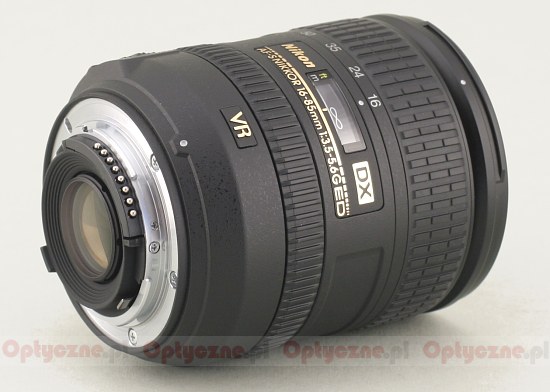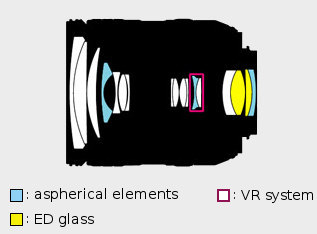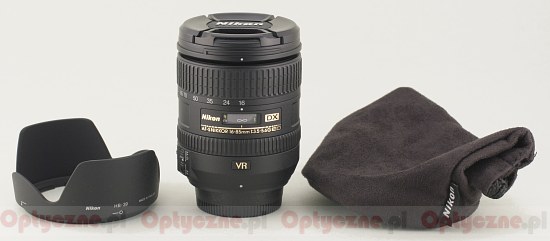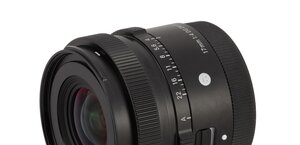Nikon Nikkor AF-S DX 16-85 mm f/3.5-5.6G ED VR
3. Build quality and image stabilization
 |
The build quality is typical for this class Nikon lenses. The barrel is made of solid composites and the mount- of metal. With the increase of the focal length the front elements is extended on a solid, duo-cam, telescopic metal tube. That way the physical length of the lens increases by over 4 centimeters.
Please Support UsIf you enjoy our reviews and articles, and you want us to continue our work please, support our website by donating through PayPal. The funds are going to be used for paying our editorial team, renting servers, and equipping our testing studio; only that way we will be able to continue providing you interesting content for free. |
- - - - - - - - - - - - - - - - - - - - - - - - - - - - - - - - - - - - - - - - - - - - - - - -
 |
Right after the front elements system, surrounded by a 67 mm non-rotating filter thread, we find a comfortable, wide zoom ring. It is smooth and well-damped.
Below, we find a clear distance scale window with the range from 0.38 meter to infinity. Even lower is situated a manual focus ring. Here we encounter the first flaw. The ring is a tad too narrow, moves quite easily but with too much slack. Sometimes even significant rotation doesn’t move the distance scale in the lens.
Under the manual focus ring, on the left, we find focus mode switches (Manual or Manual/Automatic), a stabilization switch (VR On/Off) and a stabilization mode switch (Normal/Active).
When it comes to the inner optical construction, the manufacturers didn’t stint anything. In total we have as many as 17 elements in 11 groups. Two elements were made of low-dispersion glass ED, three have an aspherical shape. The picture is complemented by a circular aperture with seven diaphragm blades, which, depending on the focal length, can be closed down to f/22 or f/36.

The buyer gets both caps , a petal-type lens hood and a flexible lens pouch included in box.
 |
Stabilization
The lens is equipped with a 2nd generation vibration reduction system (VRII), manufactured by Nikon, which, according to the producer, is supposed to guarantee high efficiency of work at the level of 4 EV. We decided to check that claims using our new method, which consists of taking 20-30 shots for every exposure time from a given range with the stabilization on and off and counting the number of blurry photos. A graph, showing a connection between blurry pictures and the exposure time (here in EV; the zero point corresponds to 1/100 s. exposure time) for the tested Nikkor 16-85 mm is presented below ( the 50 mm focal length was used).

As you see the distance between both curves amounts to nearly 3 EV and such a value at the most represents the efficiency of the Nikkor’s stabilization mechanism. It is not exactly the promised 4 EV as for no combination of exposure times the curves are distanced by such a value.






